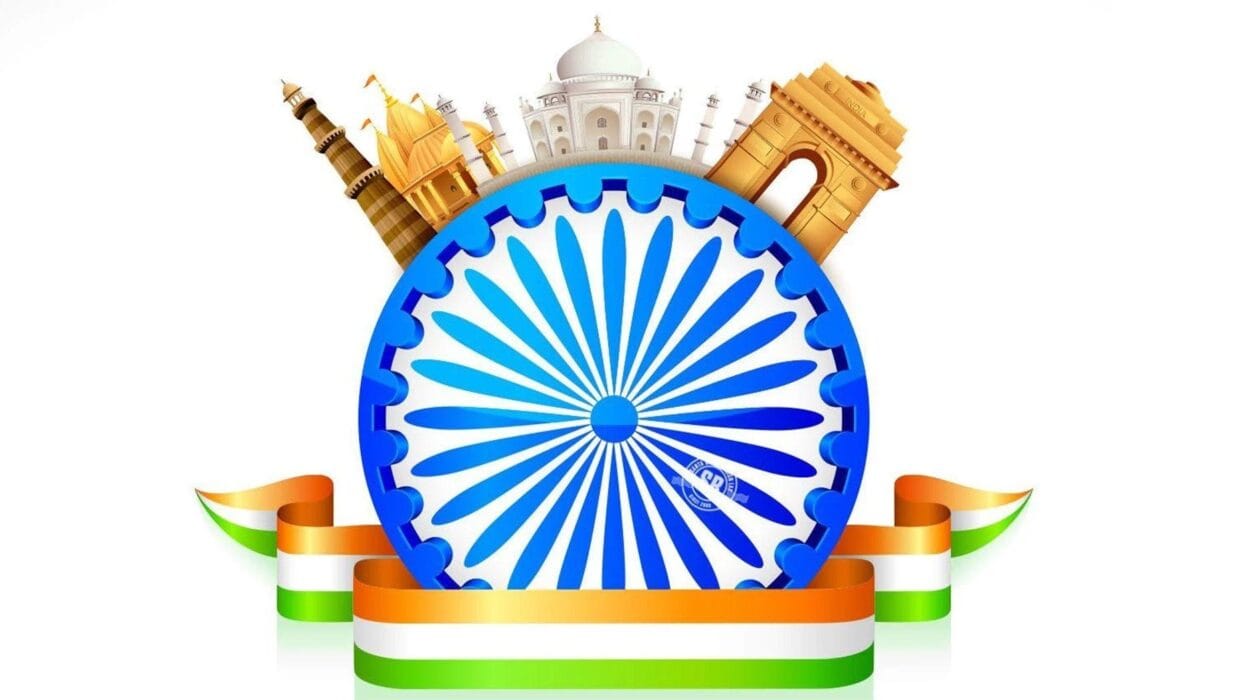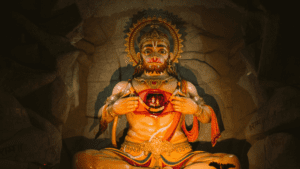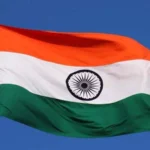A representation of the Dharma Chakra with 24 spokes is the Ashoka Chakra. It is a representation of the Ashoka Empire, which was established in the third century BCE by the Indian emperor Ashoka. The chakra appears on the Indian flag and various government logos and has been widely adopted as a national symbol. It is also used as a symbol of the Indian Armed Forces and appears on the country’s military flag. Additionally, the Ashoka Chakra is regarded as a representation of progress, peace, and humanity’s moral and spiritual advancement.
History
The Ashoka Empire, which was established by Emperor Ashoka in the third century BCE, is where the Ashoka Chakra originated as a symbol. Ashoka was a powerful emperor who controlled a large area that encompassed the majority of the Indian subcontinent. He is remembered for his non-violent, religiously permissive, and social welfare policies that contributed to the development of a peaceful and prosperous society.
After the bloody Kalinga War, Emperor Ashoka converted to Buddhism and began promoting nonviolence and religious tolerance throughout his empire. In addition, he constructed numerous Buddhist structures, including rock-cut caves and stupas, and engraved numerous of his edicts in the Brahmi script on them. These edicts are regarded as some of the earliest examples of Indian writing, and many of them have been discovered all over India.
The Ashoka Empire began to use the Ashoka Chakra as a symbol, and it continued to be linked to peace, progress, moral and spiritual advancement. The Ashoka Chakra was officially adopted as a national symbol when India declared independence from British rule in 1947. Since then, it has been prominently displayed on the national flag.
What does the symbol represents?
In Indian culture and history, the Ashoka Chakra symbol represents a number of important ideas and concepts. The following are some of the primary meanings associated with the Ashoka Chakra:

- The Wheel of Law (Dharma Chakra): The Ashoka Chakra is a depiction of the Dharma Chakra, which represents the moral and ethical principles that govern human behavior and guide social and political order.
- Progress and Development: The Ashoka Chakra is often seen as a symbol of progress and development, both for the individual and for society as a whole.
- Peace: The Ashoka Chakra is also associated with peace and non-violence, reflecting the teachings of Emperor Ashoka, who is known for promoting peaceful and non-violent governance.
- National Identity: The Ashoka Chakra is one of the most prominent symbols of India and is featured on the national flag, representing the unity and diversity of the nation.
- Spirituality: The chakra can also be seen as a symbol of spiritual awakening, the path of the inner self, and the ultimate goal of moksha or liberation.
- Military Symbol: The Ashoka Chakra is also used as a symbol of the Indian Armed Forces and is prominently featured on their flag.
Why it is adopted as National Symbol
The Ashoka Chakra was officially adopted as a national symbol of India because it represents many of the core values and ideals that are central to Indian culture and history. These include:
- Non-violence and peace: The Ashoka Chakra is closely associated with the teachings of Emperor Ashoka, who promoted non-violence and peace throughout his empire. This aligns with the principles of non-violence and peace that are central to the Indian independence movement and continue to be an important part of Indian national identity.
- Progress and Development: The Ashoka Chakra is a symbol of progress and development, which aligns with the goal of building a modern and prosperous India.
- National Identity: The Ashoka Chakra is closely associated with the Ashoka Empire, which was one of the most powerful and influential empires in ancient India. By adopting the Ashoka Chakra as a national symbol, India is able to connect with its rich cultural and historical heritage.
- Unity and Diversity: The Ashoka Chakra is a symbol of the unity and diversity of India, representing the many different regions, religions, and cultures that make up the country.
- Spirituality: The Ashoka Chakra also represents the spiritual and moral ideals that are central to Indian culture and tradition, such as Dharma, Moksha and the inner self.
So, the Ashoka Chakra represents large numbers of the vital qualities and goals that are critical to India, and its reception as a public image assists with laying out a feeling of divided personality and reason between individuals of India.
Conclusion
The Ashoka Chakra is, in conclusion, a significant symbol in Indian culture and history. It came from the Ashoka Empire, which Emperor Ashoka established in the third century BCE. It is the Dharma Chakra, which stands for the moral and ethical principles that guide social and political order as well as human behavior. The chakra is regarded as a symbol of spiritual upliftment and the ultimate goal of moksha. It is also associated with progress, peace, and national identity. After India’s independence, the Ashoka Chakra was officially made a national symbol. It symbolizes the nation’s unity and diversity and is featured on both the national flag and the flag of the Indian armed forces.











